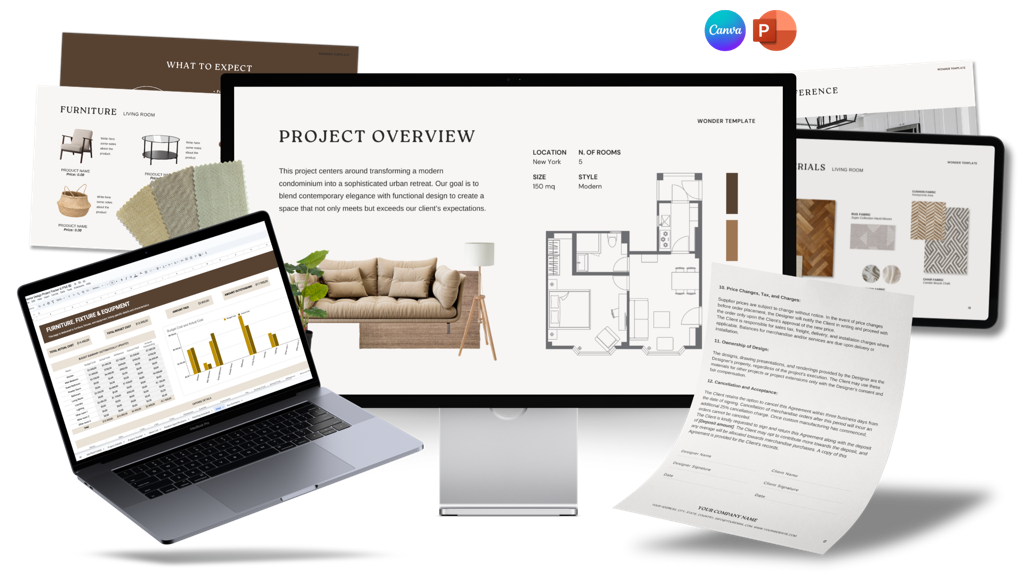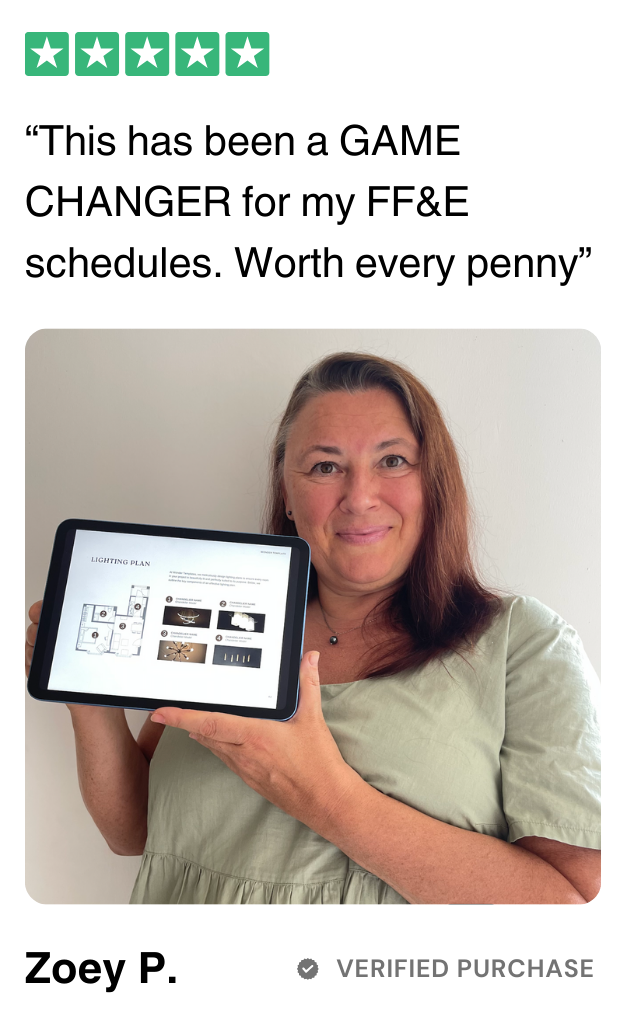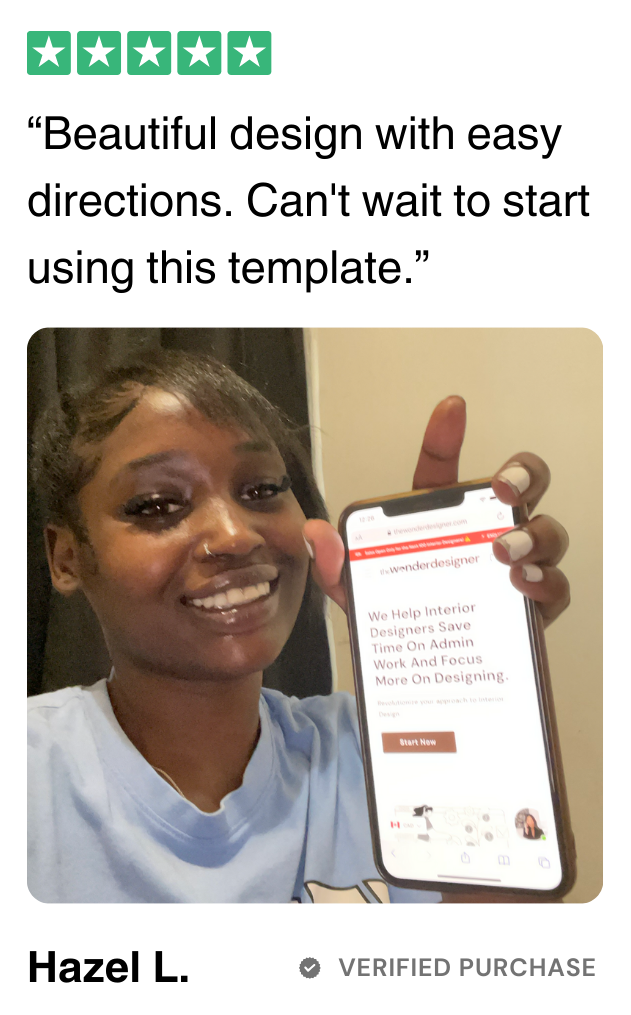How to Justify Your Interior Design Fees and Avoid Pricing Pushback
by The Wonder Designer - 10 min read

One of the biggest challenges interior designers face is pricing objections from clients. Many potential clients may not fully understand the value of your work, leading them to question your fees or compare your pricing to DIY alternatives. The key to overcoming pricing pushback is clearly communicating the value you provide and ensuring that clients understand what they are paying for.
In this article, we’ll explore strategies to justify your interior design fees confidently and help you avoid uncomfortable pricing discussions while maintaining the integrity of your business.
1. Set the Expectation Early
The best way to avoid pricing objections is to address them before they arise. Transparency in your pricing and services from the beginning sets the stage for clear expectations.
- Clearly outline your pricing structure in your consultation materials or welcome guide.
- Explain how you charge—whether it’s a flat fee, hourly rate, or percentage of the project.
- Break down what’s included in your services so clients understand what they are paying for.
By setting expectations upfront, you reduce the likelihood of surprise objections later in the process.
2. Shift the Focus from Cost to Value
Instead of justifying your fees by comparing them to other designers, focus on the value and benefits you provide. Clients are more willing to invest in a service when they understand what they gain from it.
Emphasize these key benefits:
✔ Time Savings – Clients don’t have to spend hours searching for the right materials, managing contractors, or handling design challenges. You streamline the process.
✔ Avoiding Costly Mistakes – Without a designer, clients risk choosing the wrong materials, furniture, or layouts, which can lead to expensive redesigns.
✔ Access to Exclusive Resources – You provide access to trade-only vendors, discounts, and high-quality materials they wouldn’t be able to source on their own.
✔ Higher Property Value – A professionally designed space can increase resale value, making your services an investment rather than an expense.
✔ Stress-Free Experience – You handle the logistics, problem-solving, and decision-making, reducing stress and ensuring a smooth process.
When clients see your service as a high-value investment rather than just another expense, they are less likely to push back on pricing.
3. Provide a Detailed Breakdown of Your Services
Clients may question pricing when they don’t understand everything that goes into a design project. Breaking down your services into clear phases helps them see the scope of work involved.
For example, instead of saying:
💬 “The design fee for this project is $5,000.”
Try breaking it down like this:
💬 “The design process includes the following:
- Initial consultation & project assessment
- Space planning & concept development
- Mood boards, material selection, and sourcing
- Custom furniture and finish selections
- 3D renderings & presentations
- Vendor and contractor coordination
- Final installation & styling”
By outlining everything involved, clients understand the depth of work and expertise they’re receiving, making the cost feel justified.
4. Use Comparisons to Put Pricing in Perspective
Clients often compare interior design fees to the cost of furniture or renovations, making them hesitant to pay for services. A great way to overcome this is by putting your fees into context.
For example:
💡 “Many homeowners spend thousands on furniture, but without a professional designer, they risk purchasing pieces that don’t fit or don’t work together. My service ensures you invest wisely, avoiding costly mistakes.”
💡 “Hiring an interior designer is like hiring a personal trainer. You could work out on your own, but an expert ensures faster, more effective results while avoiding mistakes.”
Drawing parallels to industries clients already understand helps them see why your services are worth the investment.
5. Show Proof of Results with Testimonials & Case Studies
Pricing objections often stem from uncertainty—clients want to be sure they’re making a wise financial decision. The best way to reinforce confidence in your pricing is to show real-life examples of past success.
- Share before-and-after images to showcase transformation.
- Use client testimonials that mention how your service saved them time, money, or stress.
- Highlight case studies that demonstrate how your design improved a client’s space, function, and home value.
When clients see tangible proof of results, they are more willing to invest in your services.
6. Offer Tiered Pricing Options (Without Undervaluing Yourself)
If a client pushes back on your pricing, offering tiered service options can help meet their budget while maintaining your profitability.
For example:
- Full-Service Interior Design – Complete design from concept to final styling ($$$)
- Design Consultation + Shopping List – Mood boards and product selections, but the client executes ($$)
- Virtual Design Package – Online consultation and recommendations ($)
This allows clients to choose the level of service that fits their budget while still benefiting from your expertise.
7. Stay Confident and Be Ready to Walk Away
The way you present your pricing directly influences how clients perceive your value. If you hesitate or seem uncertain, clients will sense it and push back.
-State your pricing with confidence and avoid justifying it in a defensive way.
- Don’t negotiate just to win a client—discounting your services sets a precedent that lowers your perceived value.
- If a client isn’t willing to invest in your services, they may not be the right fit.
It’s better to work with clients who respect your expertise and value your work than to lower your rates and compromise your business.
Justifying your interior design fees isn’t about convincing clients to pay—it’s about clearly communicating your value, setting expectations, and building trust. By shifting the conversation from cost to benefits, breaking down your process, and providing proof of results, you can confidently stand by your pricing while attracting clients who truly appreciate your work.
When you price your services with clarity, confidence, and strategy, you’ll not only reduce pricing objections but also build a more profitable and fulfilling interior design business.

The Wonder Designer Toolkit
What's Included?
First Consultation Guide & Script
Client Questionnaire
Investment Guide
Fee Proposal
Service Contract
Design Presentation
Project Tracker & FF&E
Client Handover
[BONUS #1] Social Media Kit
[BONUS #2] Portfolio
[BONUS #3] Client Welcome Guide
[BONUS #4] Video Tutorials And Lifetime Support









